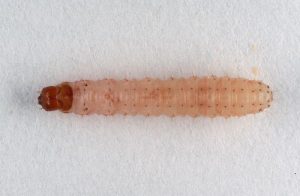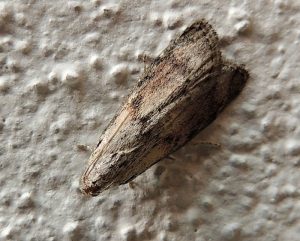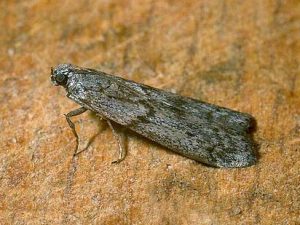Mediterranean Flour Moth (Ephestia kuehniella)
Mediterranean flour moth of the Pyralidae family is considered a big nuisance to cereal grains, mainly flour, thus ill-reputed as a pest. They inhabit warm places like bakeries and flour mills, even resulting in damage to the machinery when the caterpillar’s silk spun gets clogged within.
1.bp.blogspot.com
Scientific Classification
- Family: Pyralidae
- Genus: Ephestia
- Scientific Name: Ephestia kuehniella
Description and Identification
Pupa
The pupa is reddish-brown, with the pupal phase lasting for 8 – 12 days.
Adult Moth
Sexual Dimorphism: Present but not prominent
Since they are protogynous (reproductive organs of females maturing before than males) the first moths of the seasons spotted are the females as they appear earlier than their male counterparts.
Color and Appearance
Forewings: When opened, it is gray with black markings running through the center in a zig-zag pattern. The wings are the same gray color with black and white lines running parallel in a zig-zag manner when closed.
Hindwings: When opened, the hindwings have an off white appearance. When closed, it is gray, with the white portion barely visible.
Average Wingspan: 2 – 2.5 cm
Flight Pattern: Rapid and zig zag
Season: March – September
Eggs
The eggs appear small and white, mostly laid inside a food source like flour or any waste grains.
Quick Facts
| Other Names | Mill moth, flour moth |
| Distribution | Parts of Europe particularly Germany, and Great Britain, as well as North America and Australia |
| Habitat | In bakeries, flour mills, and warehouses |
| Predators | Parasitic wasp, and a particular bacterial genus (Wolbachia) |
| Lifespan of Adults | 1 – 2 weeks |
| Adult Diet | Do not eat because of their short lifespan |
Did You Know
- They have a wide range as mentioned above. Their existence was recorded in Germany for the first time in 1879, while in Australia, North America, and Germany, they occurred much later in 1980.
- Some of the few control measures include cleaning cracks, and crevices and using traps to catch them, mainly the male moths.
Scientific Classification
- Family: Pyralidae
- Genus: Ephestia
- Scientific Name: Ephestia kuehniella





